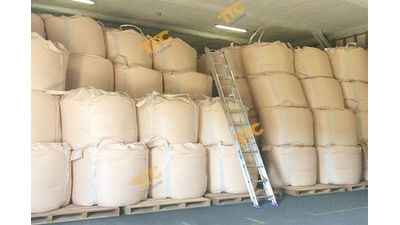1. What is PE plastic?
PE plastic is a type of polyethylene plastic, that has a simple molecular structure, and is easy to recycle. It is produced from the monomer ethylene and has high strength, flexibility, and good load-bearing capacity.
PE plastic is a type of plastic with a glossy surface, so it is considered highly aesthetic, and its heat resistance is also high, up to 230 degrees Celsius.
In addition, PE plastic does not conduct electricity, and can insulate, and resist water, steam, and gas well. With these characteristics, this is a prevalent plastic, with a consumption of up to 60 million tons of PE plastic worldwide, in many fields such as commodity production, industry, and plumbing accessories.

PE plastic is the most widely used plastic.
2. Classification of PE plastic types
There are many different types of PE plastic, including:
2.1 VLDPE plastic (Very Low-Density Polyethylene)
VLDPE is also a material belonging to the PE plastic family. However, the density of PE in this material is very low (about 0.880 to 0.915g/cm3), considered the lowest among PE plastics.
They are amorphous solids, highly flexible, and have good toughness.
With these characteristics, they are used in the production of stretch films, shrink films, and protective gloves, and are also used to line lakes and silos.
2.2 LDPE plastic (Low-Density Polyethylene)
LDPE plastic has a higher density of PE plastic than VLDPE plastic (0.910 - 0.940 g/cm3). This plastic material has the characteristics of good chemical corrosion resistance, high electrical insulation, and low water absorption ability. Therefore, they are used in the production of computer components, in laboratories, in industrial production...
2.3 LLDPE plastic (Linear Low-Density Polyethylene)
LLDPE plastic has a very low density, in the range of 0.910 - 0.925 g/cm³. This type of plastic is characterized by light weight, flexibility, good impact resistance, easy to clean, colorless, odorless, tasteless, and safe for consumers' health. Especially high resistance to cracking.
Therefore, they are widely used in the production of thin films that still have high toughness and durability, such as: food wrap, agricultural glass film, sacks, kitchen accessories, toys...
2.4 MDPE plastic (Medium-Density Polyethylene)
With an average PE content ratio (0.926-0.940 g/cm3), MDPE plastic is a plastic material with good impact resistance and high waterproof and leak-proof properties. MDPE is commonly used in fields such as: manufacturing air pipes, and accessories, processing all kinds of sacks, packaging films, etc. This is also one of the most used plastics in manufacturing in Vietnam. Vietnam market today.
2.5 HDPE plastic (High-Density Polyethylene)
HDPE plastic material has a high PE density: 0.941 - 0.965 g/cm³. This is considered one of the most versatile plastic materials for the following reasons: easy to melt and mold, lightweight, high corrosion resistance, high durability and longevity, good waterproofing ability and easy to use. easy to recycle.
This material is used to produce drums, industrial containers, milk and juice bottles, food packaging lids, trash cans, toys, detergents...

HDPE plastic material is used to make drums and industrial containers.
2.6 XLPE plastic (Crosslinked Polyethylene)
This material has a PE density of 0.9 g/cm3. They possess the characteristics of high durability and longevity, good heat resistance, electrical resistance, water resistance, waterproofing, and chemical resistance, which are all highly appreciated.
The most common applications of XLPE plastic are construction plumbing systems, pipes, insulation materials for high voltage cables, and copper pipes in water pipes.
2.7 HDXLPE plastic (High-Density Crosslinked Polyethylene)
This is a type of plastic with high density and cross-linking, especially it is cross-linked with high density, very good anti-conductivity and waterproofing. They also can self-heal, have good impact resistance, are chemical resistant, and are cheap. Besides, this type of plastic is also easy to process because its viscosity changes easily with temperature.
This material is used to produce pipes, wires, plastic films, accessories such as electric cables, and containers such as tanks.
3. Applications of PE plastic in life
PE plastic is widely used in many fields, including:
- Packaging and packaging.
- Pipes and tubes, copper pipes.
- Toys and household items.
- Cables and electrical cables.
- Used to make lining for swimming pools and water tanks.
4. Advantages and disadvantages of PE plastic
4.1 Advantages of PE plastic
- Flexibility and pliability.
- Safe for human health and does not harm the living environment.
- Chemical resistant, waterproof, some types can resist electrical conductivity.
- Easy to recycle and reuse.
- Affordable price.
4.2 Disadvantages of PE plastic
- Heat resistance and impact resistance are not too high.
- Vulnerable to UV light.
5. Is PE plastic safe?
PE plastic is considered safe for use in everyday household environments. It contains no toxic substances and is not harmful when exposed under normal, indoor conditions.
6. Notes when using PE plastic
Avoid exposure to high temperatures and direct sunlight to avoid reducing the flexibility and durability of PE plastic.
When disposing of products made from PE plastic into the environment, you should carefully classify and recycle them properly to protect the environment.
PE plastic is widely used in everyday life. Understanding PE plastic materials, their advantages and disadvantages as well as the safety level when using them will help you use this material most effectively and safely. Hopefully the above article has helped you learn more useful knowledge to apply in work and life.












